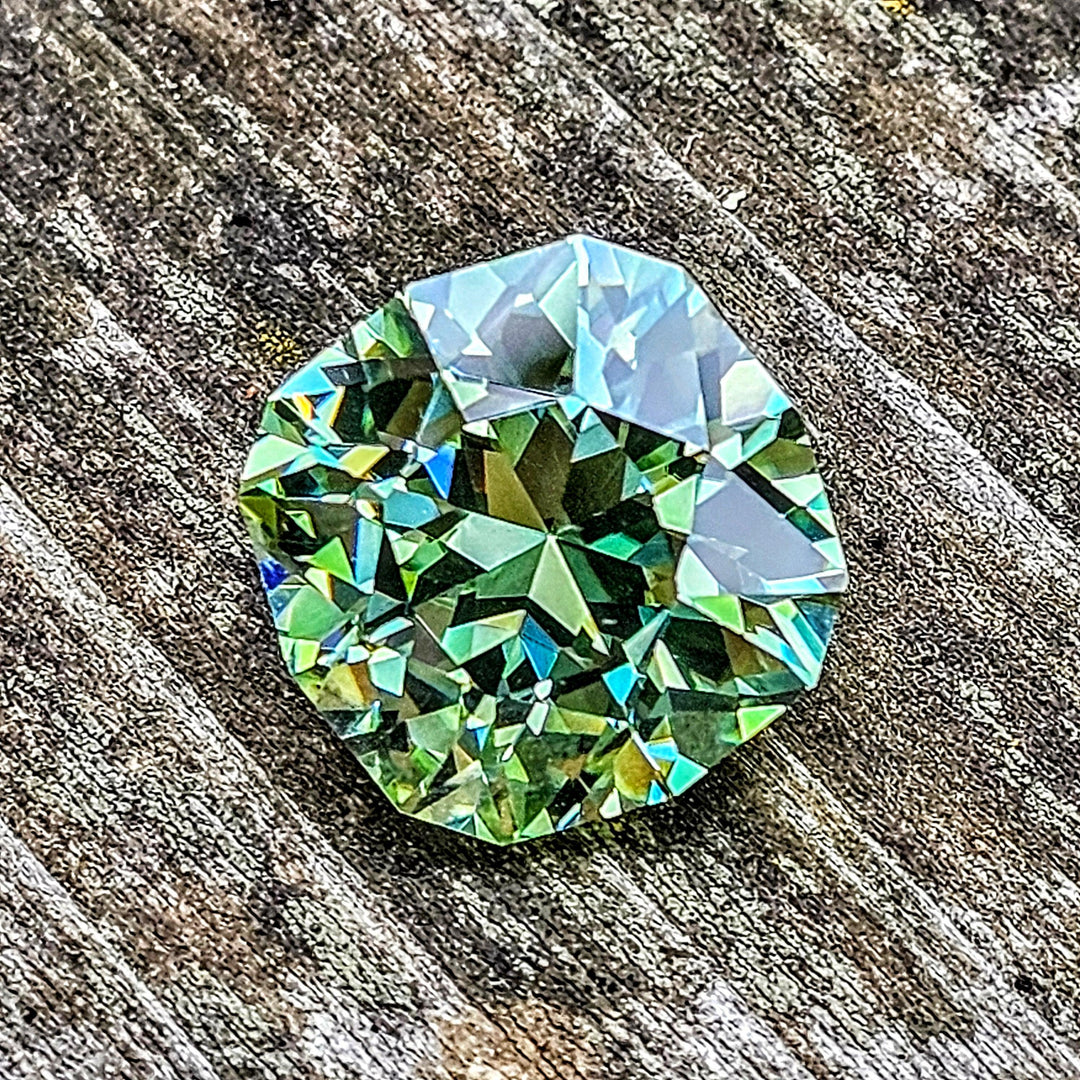Lithium tantalate (LiTaO3) is a synthetic crystal that has garnered considerable attention in the scientific field due to its unique optical and electronic properties. Primarily known for its piezoelectric, pyroelectric, and ferroelectric capabilities, lithium tantalate is extensively used in a variety of applications, including electro-optical modulators, pyroelectric detectors, and acoustic wave devices. Its ability to modulate light and convert mechanical vibrations into electrical signals, and vice versa, makes it a critical component in telecommunications and various sensor technologies. The crystal's high thermal stability and wide transparency range from ultraviolet to mid-infrared also enhance its utility in nonlinear optics, such as in frequency doubling (second harmonic generation) lasers and other photonic devices.
In the gem trade, while lithium tantalate is not traditionally recognized as a gemstone, it has found a niche due to its attractive optical properties and potential for jewelry use. The material's high refractive index and significant dispersion can impart a striking brilliance and fire, akin to that of diamonds, when cut and polished. Historically, its use in the gem trade has been limited but remains a point of interest for gem enthusiasts and collectors looking for unusual or scientifically intriguing materials. Lithium tantalate's piezoelectric properties have also spurred curiosity in its incorporation into wearable technology, potentially linking aesthetic appeal with functional, interactive properties. Despite its limited history in mainstream jewelry, lithium tantalate exemplifies the merging paths of scientific materials and the gem trade, exploring new frontiers in both ornamental and functional design.
